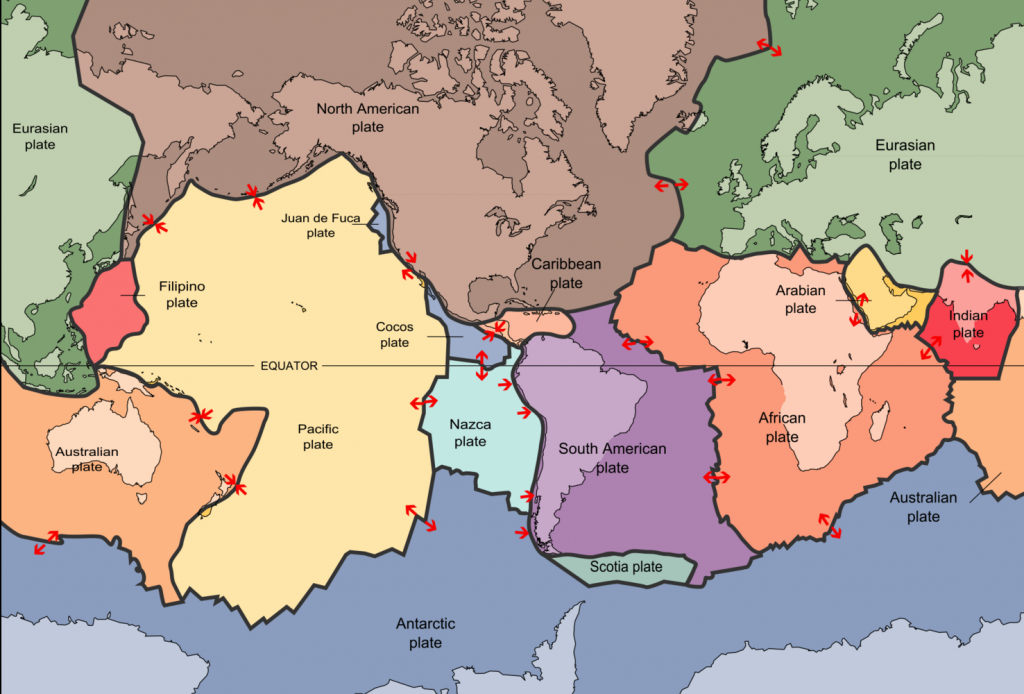Constructive Plate Margins
Constructive (divergent) plate margins happen when plates move apart.
Most constructive plate margins are under the oceans, where two sections of oceanic crust move apart. At a constructive plate margin, where two sections of oceanic crust are separating, the lithosphere becomes thinner, leading to the upwelling of mantle rock. The reduced pressure exerted by the crust (because it is thinner) onto the mantle leads to mantle material melting (through a process called decompression melting), leading to diapirs, which feed magma chambers along the ridge. Magma can then rise to the surface in dykes, leading to surface eruptions and forming new crust, which drives the process of ridge push. The rising magma can form shield volcanoes.
Examples of conservative margins include the South American Plate, the African Plate, the Eurasian Plate, and the North American Plate.

A map to show the Earth’s plates
Constructive boundaries are mainly located under the sea, e.g. the Mid-Atlantic Ridge. Here, chains of underwater volcanoes have formed along the plate boundary. One of these volcanoes may become so large that it erupts out of the sea to create a volcanic island, e.g. Surtsey and the Westman Islands near Iceland.
Iceland is about 18 – 25 million years old and is thus one of the youngest countries in the world. The formation of Iceland started about 60 million years ago when the mid-Atlantic ridge (the boundary between the North American tectonic plate and the Eurasian tectonic plate) started to give way, and mantle plumes appeared.
The image below shows Brú milli heimsálfa or the ‘Bridge between continents’ which links the North American and Eurasian plates that form the constructive margin that runs through Iceland. To the left is the North American plate and to the right is the Eurasian plate.
Find out about conservative and destructive plate margins.
Use the images below to explore related GeoTopics.